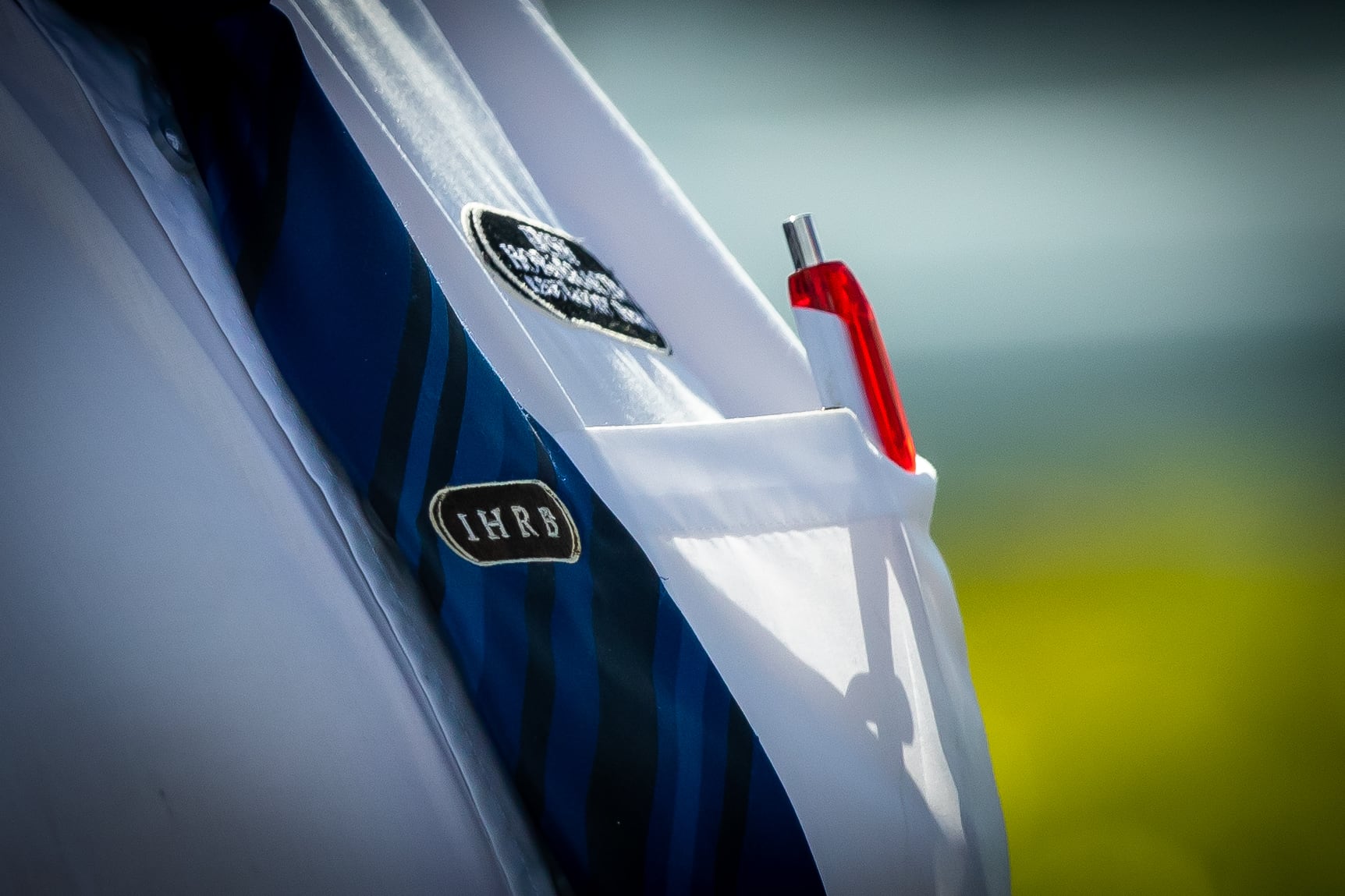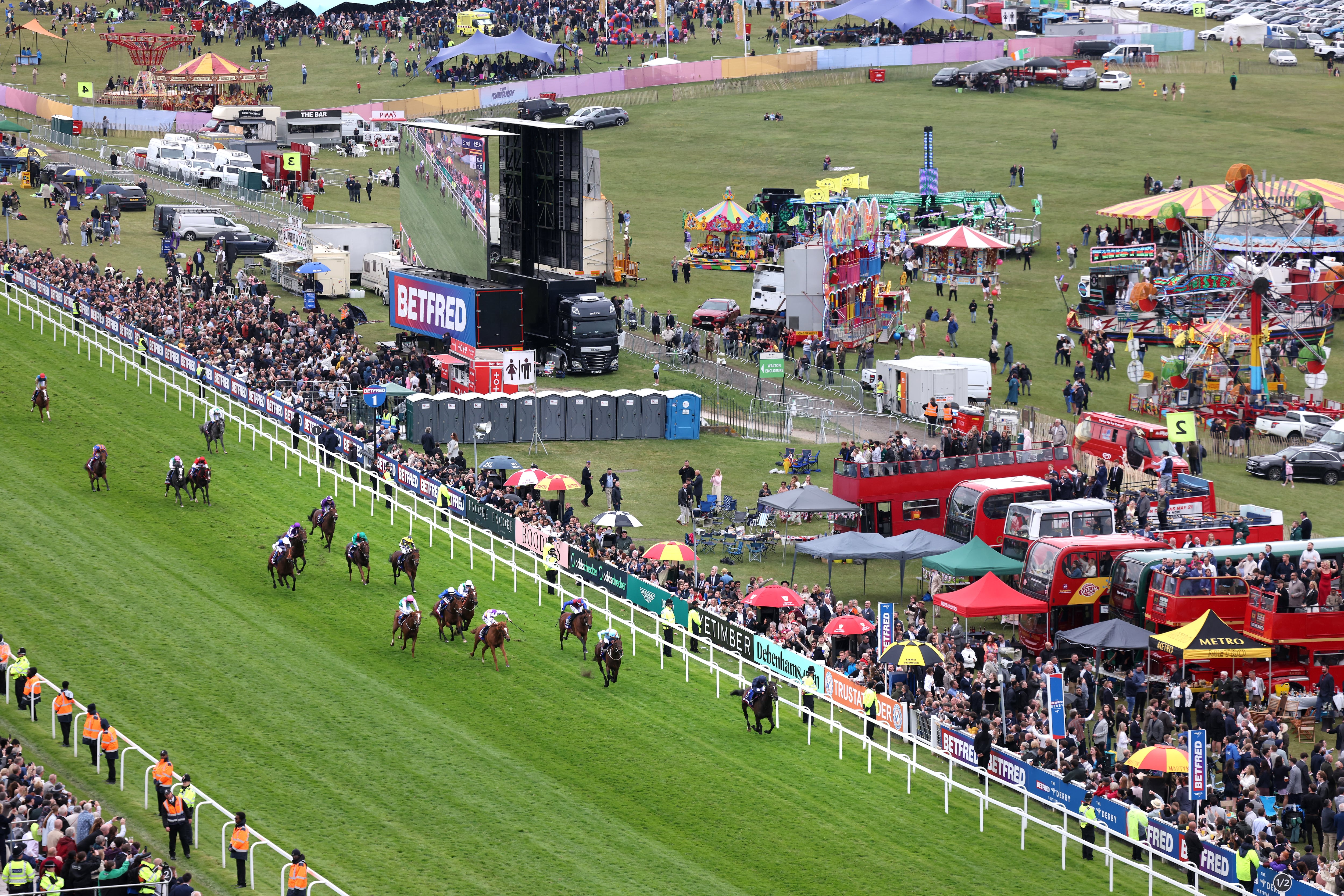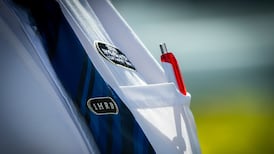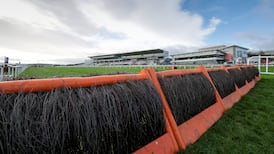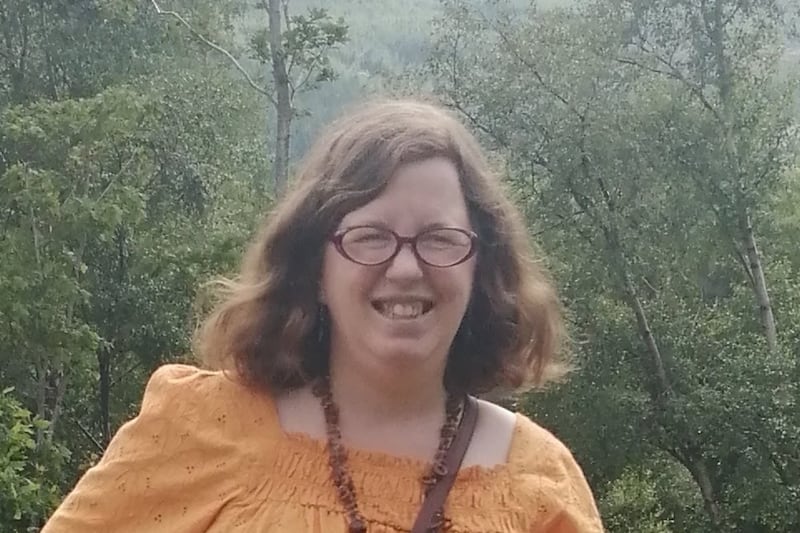Wesley Joyce speaks in a whisper, as if he’s chatting at the back of Mass.
In shops, he says, the person on the till will sometimes lower their tone to meet his pitch, in a peculiar act of politeness. Or say something fruity like, “You must have had a hard night last night?” He smiles back, and nods. Long story.
Interviewers at the races hold the microphone close to his mouth because in racing’s little village everyone knows. After the fall that nearly claimed Joyce’s life, the only thing he lost was the power in his voice.
They haven’t given up on a remedy. There have been multiple scans and a couple of operations, and they have reached out to a specialist in England who might have a solution. Meanwhile he carries on, adjusted to the life that was ruined and restored.
READ MORE
“I don’t mind if my voice never comes back,” he says. “I can still communicate with other people. If my voice is the only thing that’s gone, let it be. I’m lucky to be here as it is. To come out of it with no voice, I think I came out of it lucky. If I’ve something to say I’m very quick to get my point across – even with no voice.”
It is more than two years since his calamitous fall from Red Heel at the Galway Festival, and it is over a year since his comeback. Between those two momentous events, the odds kept changing. Mostly against. When the first responders put him in an ambulance at Galway racetrack, they couldn’t be sure he would make it to the hospital alive. If he survived, their next concern was brain damage.
Joyce spent a week on a ventilator and six weeks in a high dependency ward, some of it in an induced coma, bed-bound and being fed through a tube. Both of his lungs had been punctured and needed to be drained, constantly, painfully. He had suffered chest trauma and broken ribs and damage to his oesophagus and larynx. Immediately after the fall, there was no blood flow to his left arm.
Everyone close to him was summoned to the hospital. One by one, the worst-case scenarios were replaced by the next-worst.
It was about two weeks before he was alert again. On that day he asked to see Karen Keehan, a youth worker with the Moyross Youth Academy in Limerick. The angel on his shoulder.
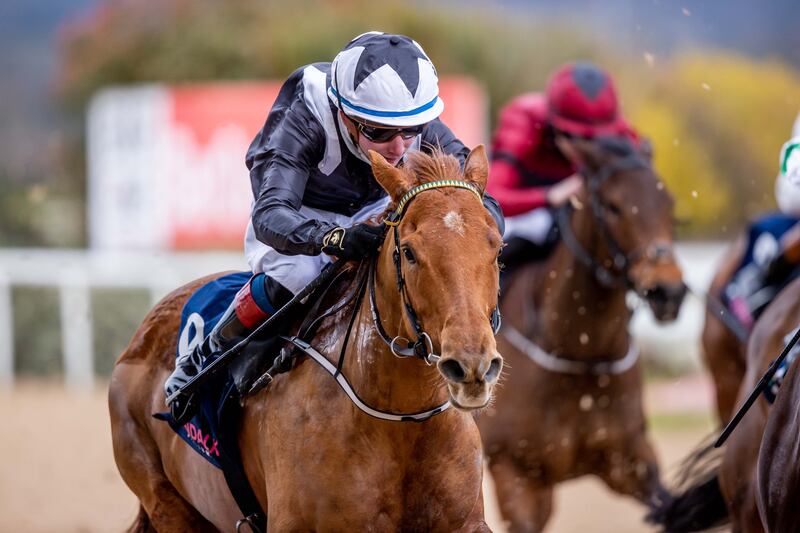
“I drove to Galway straight away,” says Keehan. “I’m getting emotional now even thinking about it. I went into him, and he was awake. He couldn’t move at that stage. I said to him, ‘You’re so lucky to be here with us. And I’m so glad to see you and to see a big smile on your face’.
“And he said to me, ‘Karen, did you see it [the fall]? I said I didn’t, and I haven’t watched it.’ ‘I’ll show you,’ he said, ‘get my phone’. He was mad to go through it with me. We watched it together and I just thought, ‘Fuck’.
“He said to me, ‘I can’t wait to get back riding’. I said, ‘What? Wesley, are you mad?’ And even myself, I was questioning my own involvement here and was I going to move away from the equine side of things. And he said, ‘I cannot wait to get back on a horse’.”
Joyce was five years of age when Keehan first encountered him in Corpus Christi, a primary school in Moyross. The local youth project had started an equine programme, and a teacher had brought Joyce to their attention. In the housing estates around Moyross, horses and ponies were part of the fabric of life.
“This kid was absolutely stone mad about horses,” says Keehan. “He was bare-backing around the place, absolutely no fear. No fear at all. He looked happiest when he was sitting on a horse. His face would absolutely light up. When he came into us, I started looking for the reaction of the [riding] instructors and I could see them looking at each other, giving a little smile. You could see what they were thinking. ‘This kid has something special’.”
Joyce reckons he was about 13 years of age when he paid €70 for a couple of ponies. Though he had nowhere to keep them, they were part of the family.
“You could get off them outside your front door and let them go off across the green,” he says.
“I was always going down the co-op, buying them feed. I was one of many going out and buying feed. There’s a lot of horses down there, and they’re in top shape. The horses wouldn’t be wild but people down there, they haven’t got land. That’s their grazing, in the estates.”

Joyce needed guidance. A firm hand. Patience. Managing.
“When he was a youngster, Wesley had a bit of a wild streak,” says Keehan. “If there was a big red button on the wall saying, Do Not Press, he’d be running at it.”
Keehan and Wesley’s mother, Geraldine, laugh about it now, but on the day of the accident one of the doctors asked them about old skull fractures that had shown up on a scan. Karen and Geraldine looked at each other and looked back at the doctor with blank faces.
“‘Yeah, he has various skull fractures at the base of his neck,’ the doctor said. He was like, ‘When did this happen?’ Sure, we never knew about them. I looked at the doctor and I said, ‘He would have been a wild youngster. Climbing trees and falling and getting back up and not a bother on him. That kind of a lad’.”
In the Moyross project they focused on the strengths of the young people. Their aim was to sow ambition. Often, they were starting from scratch. Joyce was different.
“It wasn’t easy for Wesley, but he just had this determination. He didn’t know what a jockey was, but he was dreaming that he wanted to be jockey.”
Joyce was tricky. Challenging. He depended on the forbearance of others. He needed people not to give up on him. He needed forgiveness, like the rest of us.
“My childhood growing up, you know, there was a lot of mischief. Probably going down the wrong roads with the wrong people. Just doing the wrong things. And Karen was always, ‘Wesley you can’t be doing that’. And I’d say, ‘Yeah, yeah, yeah’. And the next day I’d be back doing the same thing. I’d say she had no hair left from pulling it out, trying to keep me on the straight and narrow.
“They could see the road I could have went down and the road I was going down. So they took me in and looked after me and kept pointing me in the right direction. I was always on the edge, but I always knew I was on the edge and I could turn back.”
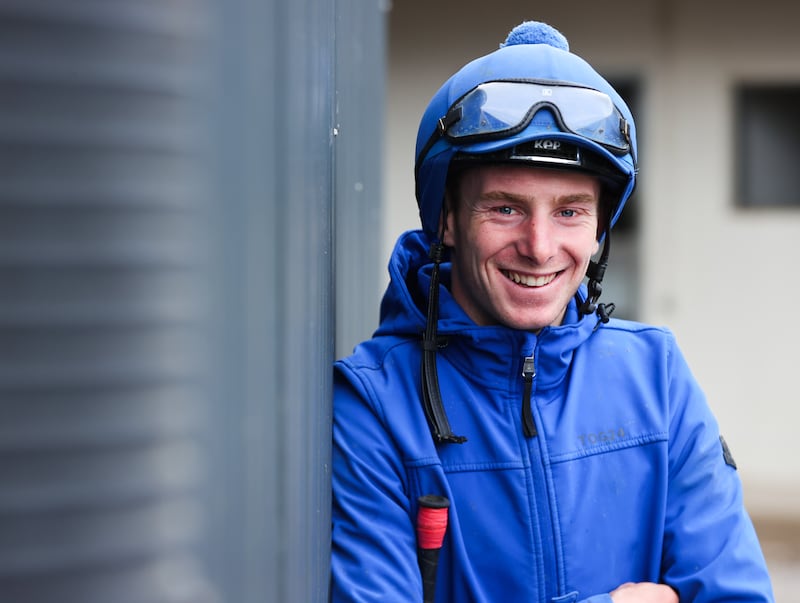
In his late teens Joyce applied for a place in Race, the racing academy in Kildare. He was turned down. They said that he needed to “grow up a little bit”. He waited for a year and applied again.
“I dropped out of school after my Junior Cert and the teacher asked me, ‘What are you going to be?’ I said I’m going to be a jockey. And she said, ‘What’s your second option?’ I said there is no second option. I said to myself, ‘If I start doubting myself now, I’ll never make it as a jockey’.”
Nothing was straightforward. His year in Race was interrupted by the pandemic and everyone was sent home. Keehan knew that he needed to be in a racing yard. An approach was made to Johnny Murtagh. He welcomed Joyce with open arms.
At first it was a struggle. For weeks Joyce called Keehan every day. She convinced him to stay. This was his chance: big yard, plenty of opportunities, a trainer who believed in his talent, a daily diet of strictness and kindness.
At the time of the fall, midway through the 2022 season, Joyce was just one winner short of his total from the previous year. For a 19-year-old apprentice, he was flying. After the fall, nothing was certain. By the time he was discharged from hospital he had suffered so much muscle wastage that he weighed less than seven stone.
“He was emaciated,” says Keehan. “He was walking very slowly. Everything was a slow movement. He was a very, very ill boy. I remember around Christmas [five months after the fall] just being worried about him. I just thought, ‘he’s quite traumatised and he doesn’t realise it’.
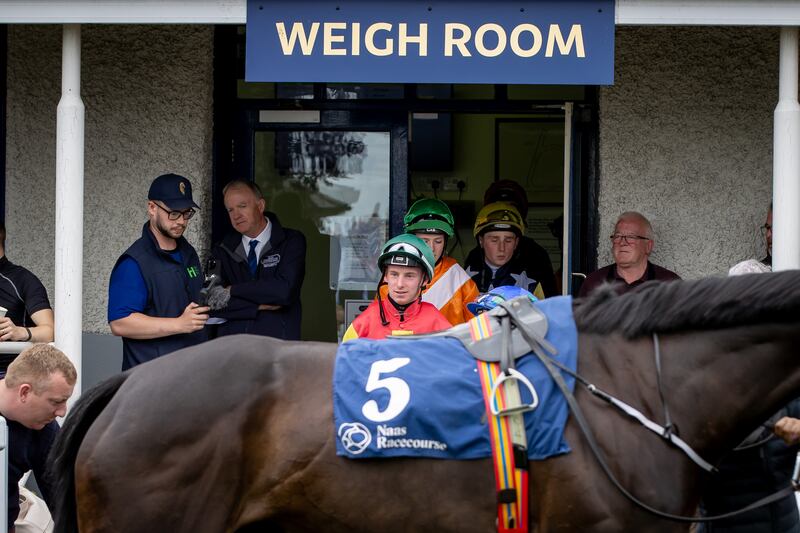
“Dr Jennifer Pugh [IHRB doctor] was unbelievable to Wesley. What she did was above and beyond [the call of duty]. Arranging appointments for him. Always on the end of a phone. I remember her saying to me that she had only read of these kind of injuries in the postmortem after a motorcycle crash. I remember her saying that to me.”
In February of last year Race agreed to take him back as a resident, so that he could work with fitness coach Wayne Middleton. Rebuilding his aerobic capacity was the first challenge. Both of his lungs had been punctured. His oesophagus was only functioning at 80 per cent.
“I couldn’t run two kilometres and I’d be out of breath,” he says. “Couldn’t breathe. Just jogging, I couldn’t breathe.”
“He was frustrated with his limitations,” says Keehan. “He was nearly avoiding Wayne’s sessions because he knew he wasn’t able. He was puffing too hard at the end of it, and he was frightened. We had to sit him down and tell him, ‘Wes, you’re puffing because your lungs are still healing, because your oesophagus is only open 80 per cent. You’re okay. Take time to recover’. I suppose he was asking himself questions then. ‘Is this it? Am I finished?’”
When the time came, he needed medical clearance to return to the saddle. The surgeon in Galway who had operated on him refused to grant it. He sought a second opinion. “He said, ‘Look, if you want to come back, you can come back, but it’s at your own risk’.”
Joyce was certain that he hadn’t lost his courage. Whatever else the fall had taken from him, his nerve was intact.
“I can’t remember waking up that morning and going to Galway,” he says. “I can’t remember being at the races or anything to do with the race. I don’t remember any pain in the hospital. It’s all just a video – the same as you watching it. I didn’t feel anything so I have nothing to be scared of.”
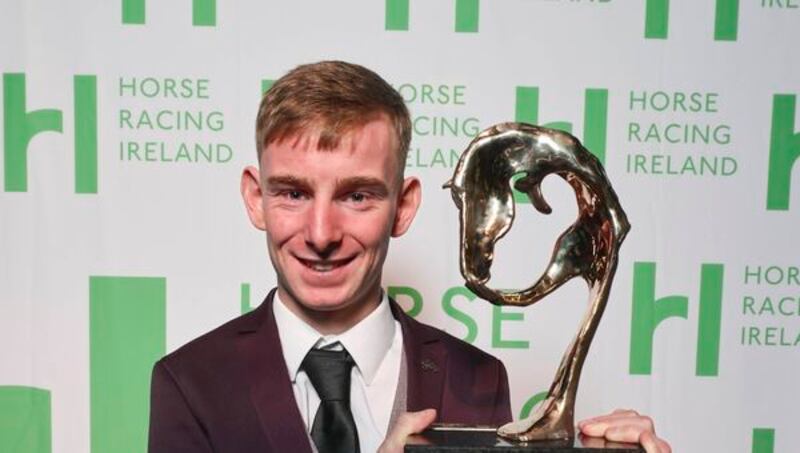
When he rode his comeback winner in Cork last August, his mother was there. Before the fall Geraldine had never been a racegoer, but for a few months after his comeback she turned up in all kinds of places, anxious and fretting and committed to the path he was on.
“She texts me every morning before I go to work: ‘Best of luck Wes. I love you’. And at night time before I go to bed, she texts me: ‘Good night Wes. I love you’. She has no racing background and that’s a good thing. I could give a horse a stones of a ride and I could be depressed off my head going home and she’d text me: ‘You did great son. I love you’, and I’d start laughing. It’s very special. I love her so much.”
Joyce is based in Michael Mulvaney’s yard now. Red Heel is part of his string, just as he was when Joyce took the fall in Galway. Since then, Red Heel has run 22 times and won just once. On that evening in Down Royal four months ago, Joyce was in the saddle. Imagine.
“I got back into the car to go home and I fucking cried. It’s a long drive from Down Royal to Kildare and everything came back to me all at once. The fall came back to me and what I went through in the hospital. And I was thinking, ‘I’ve just won on her’. I rang Karen. I said, ‘Karen, I can’t believe what just happened.’ I just cried”.
No need to say anything.
- Sign up for push alerts and have the best news, analysis and comment delivered directly to your phone
- Join The Irish Times on WhatsApp and stay up to date
- Listen to our Inside Politics podcast for the best political chat and analysis


